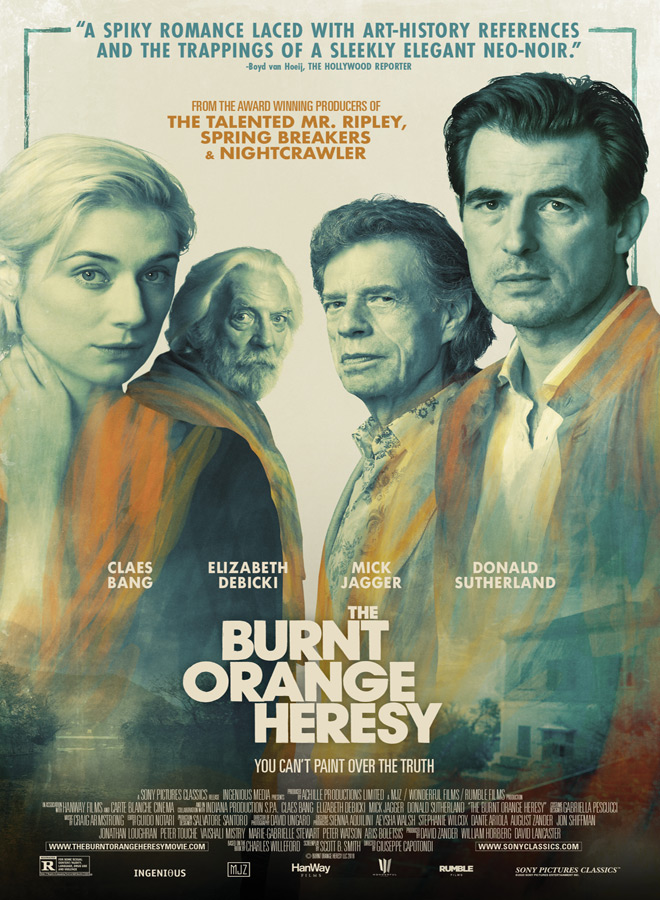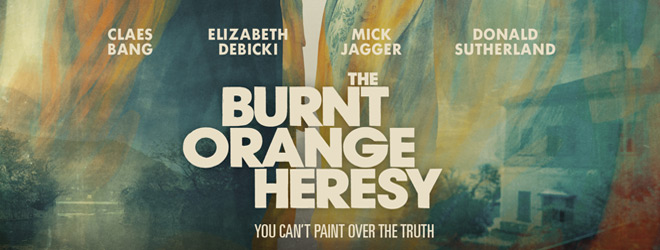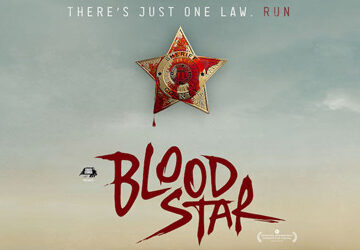The phrases “art world” and “Thriller” rarely go hand in hand. However, The Burnt Orange Heresy, the latest film from Director Giuseppe Capotondi (The Double Hour 2009, Suburra: Blood on Rome series), manages to marry the two quite well. The film had the honor of closing out the Venice International Film Festival in 2019 before the impact of COVID-19 delayed its wider release. Now, audiences can view it in a limited theaters as of August 7th thanks to Sony Picture Classics.
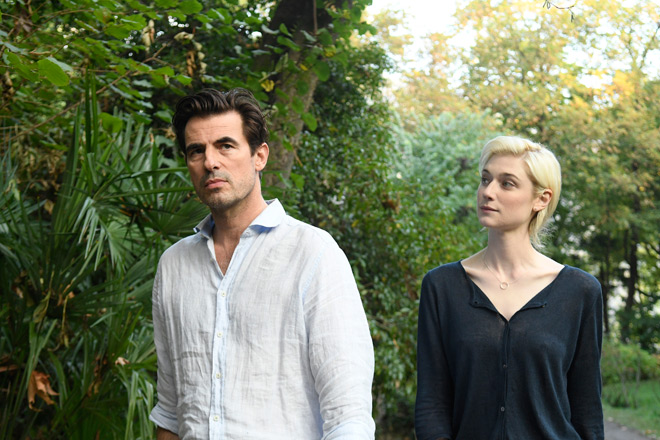
A Euro-Thriller, it weaves a tale of deceit and intrigue in which an embittered art critic (Claes Bang: The Square 2017, Dracula 2020) is hired to steal a painting from a reclusive master (Donald Sutherland: Don’t Look Now 1973, The Hunger Games 2012) at any cost. Also starring Elizabeth Debicki (The Great Gatsby 2013, Widows 2018) sand Mick Jagger (yes, that Mick Jagger), The Burnt Orange Heresy is a slow burn that would have sputtered out were it not for its outstanding cast.
Based on the Charles Willeford novel of the same name, The Burnt Orange Heresy finds harismatic art critic James Figueras (Bang) spending his days giving uninspired lectures to tourists in Milan, Italy, until he meets the enigmatic Berenice Hollis (Debicki) and the two quickly embark on a whirlwind relationship. They travel to the estate of esteemed collector Joseph Cassidy (Jagger), who leverages James’ shady past and blackmails him to steal a piece of art from Jerome Debney (Sutherland), a world-renowned but hermetic master painter.

Burnt Orange Heresy attempts to hold a mirror to the fine art world, depicting it as pretentious and duplicitous while also seeking to question the importance of art itself. This may be too lofty a goal for a film with a runtime of only 99 minutes, as its attempts to be open ended are more frustrating than satisfying. However, the stellar cast buoys the story as it slowly weaves its twists and turns.
The true star performance is that of Debicki, who plays Berenice with an unnerving nuance and subtlety. In a story where everyone has something to hide, the Mona Lisa-like smile and stoicism gives dimension to a character that the script seems determined to make flat. As Bang’s character loses himself to greed, Debicki’s control makes Berenice easily the most likable and necessary character in the film.
All this said, sometimes it seems like Burnt Orange Heresy does not know what genre it truly wants to be, but the cinematography from David Ungaro and direction from Capotondi use the drearily elegant backdrop of Lake Como to set a bleak, eerie tone—the antithesis of the titular burnt orange. Strategically placed statues and works of art look on as the story unfolds, keeping the film visually sleek and eye-catching even when the story fails to hold attention.
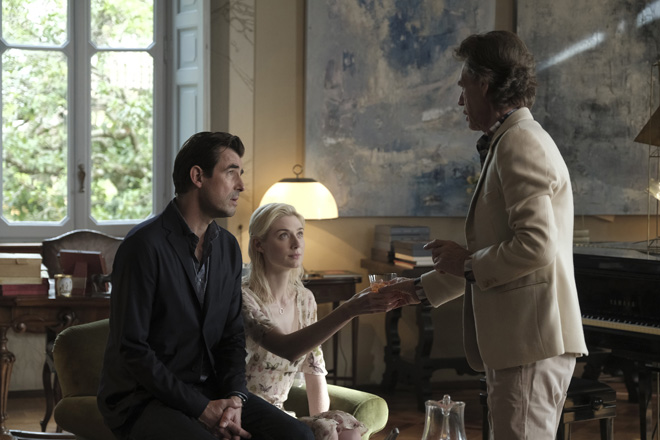
While Burnt Orange Heresy lacks the pulse-pounding action one might expect from a Thriller, those who typically enjoy more character-driven independent cinema will likely find their niche here. Though the film seems to market itself as a sleek and sexy Thriller, the story plays out like more a novel, building up very slowly to a dramatic climax reminiscent of an Edgar Allen Poe tale.
Overall, The Burnt Orange Heresy is reflection of the fine art world its characters are entrenched in: both everything and nothing is as it appears on the surface. For these reasons, Cryptic Rock gives this film 3 out of 5 stars.
